On this page you will find a comparison by Tom S of the mastered version of Slide Away (from the original Creation CD) and the un-mastered version on the safety copy of the Definitely Maybe master tapes. The aim is to offer a more technical insight into how the mastering process shaped the sound of the album, and to show the difference in dynamic range (or ‘crest factor’) between some of the different versions currently available. Huge thanks to NoelsOasis of the excellent Supernova Heights Oasis forum for providing the source material, and to Tom S for the analysis that follows.
Here is the dynamic range data (calculated by the TT DR Meter) for the unmastered version of Slide Away on the safety masters, compared to the mastered version on the original Creation CD.
Slide Away (Un-mastered mix on Safety Copy of Masters)
Peak value: -0.00 dB
Average RMS signal level: -11.59 dB
Dynamic Range: 10 dB
Slide Away (Mastered version on Creation CD)
Peak value: -0.05 dB
Average RMS signal level: -6.80 dB
Dynamic Range: 5 dB
Tom’s notes on the mastering…
There are (at least) five different officially released masterings of Slide Away. These are on…
1. Definitely Maybe (1994, UK Creation CD release)
2. Whatever (UK CD single)
3. Slide Away (UK 1-track promo CD single)
4. Definitely Maybe (2006 Japanese reissue CD with bonus tracks)
5. Stop the Clocks UK CD (2006, digitally re-mastered by Ian Cooper)
They’re mainly near as makes no odds; oddly none of them synchronise perfectly. Level-wise the Time Flies version is much more slammed than the others, which are all pretty similar. The most dynamic is the promo version.

Waveform of Slide Away from 1-track promo CD
UK Creation CD:
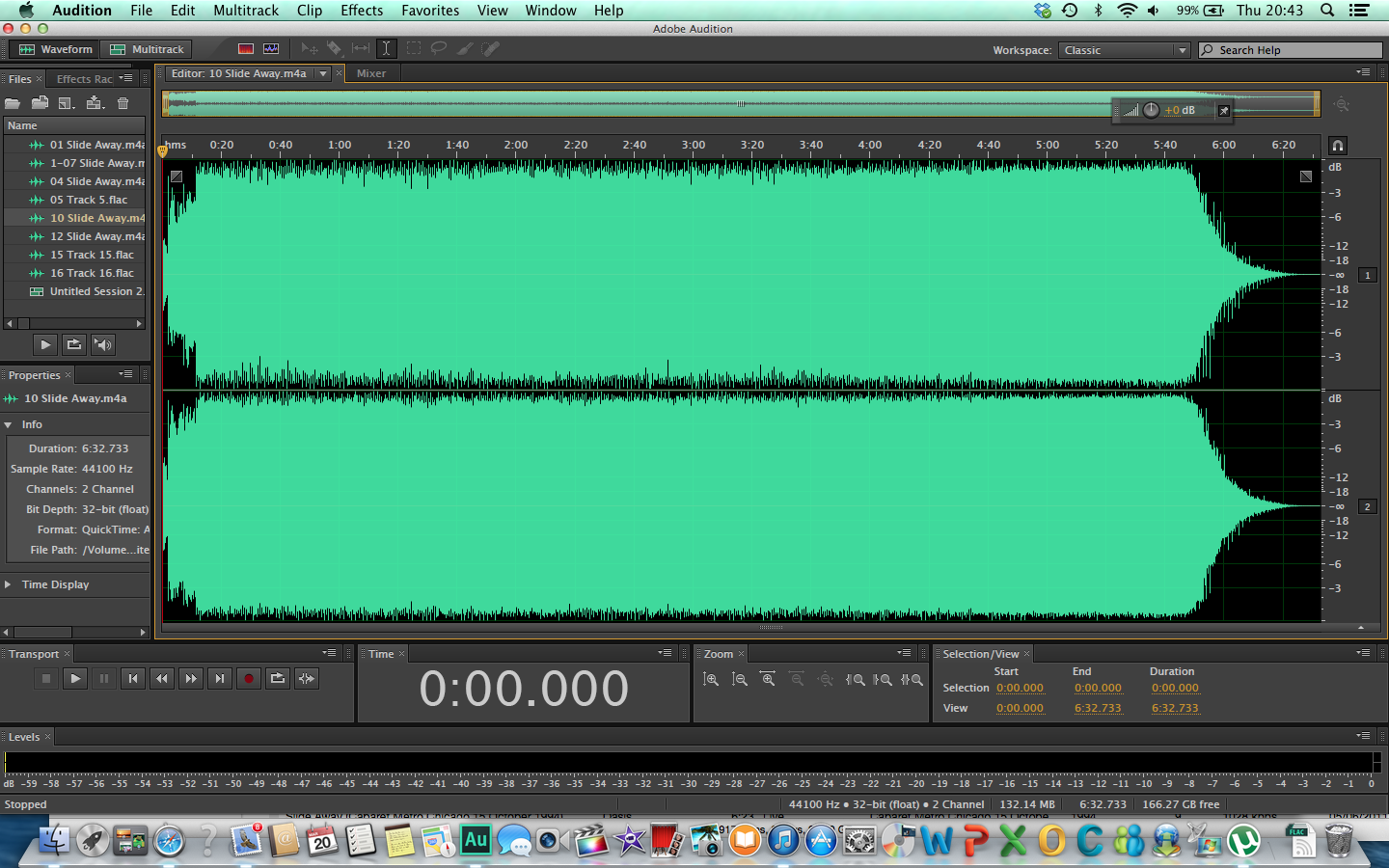
Waveform of Slide Away on UK Creation CD (DR5)
Whatever CD single:
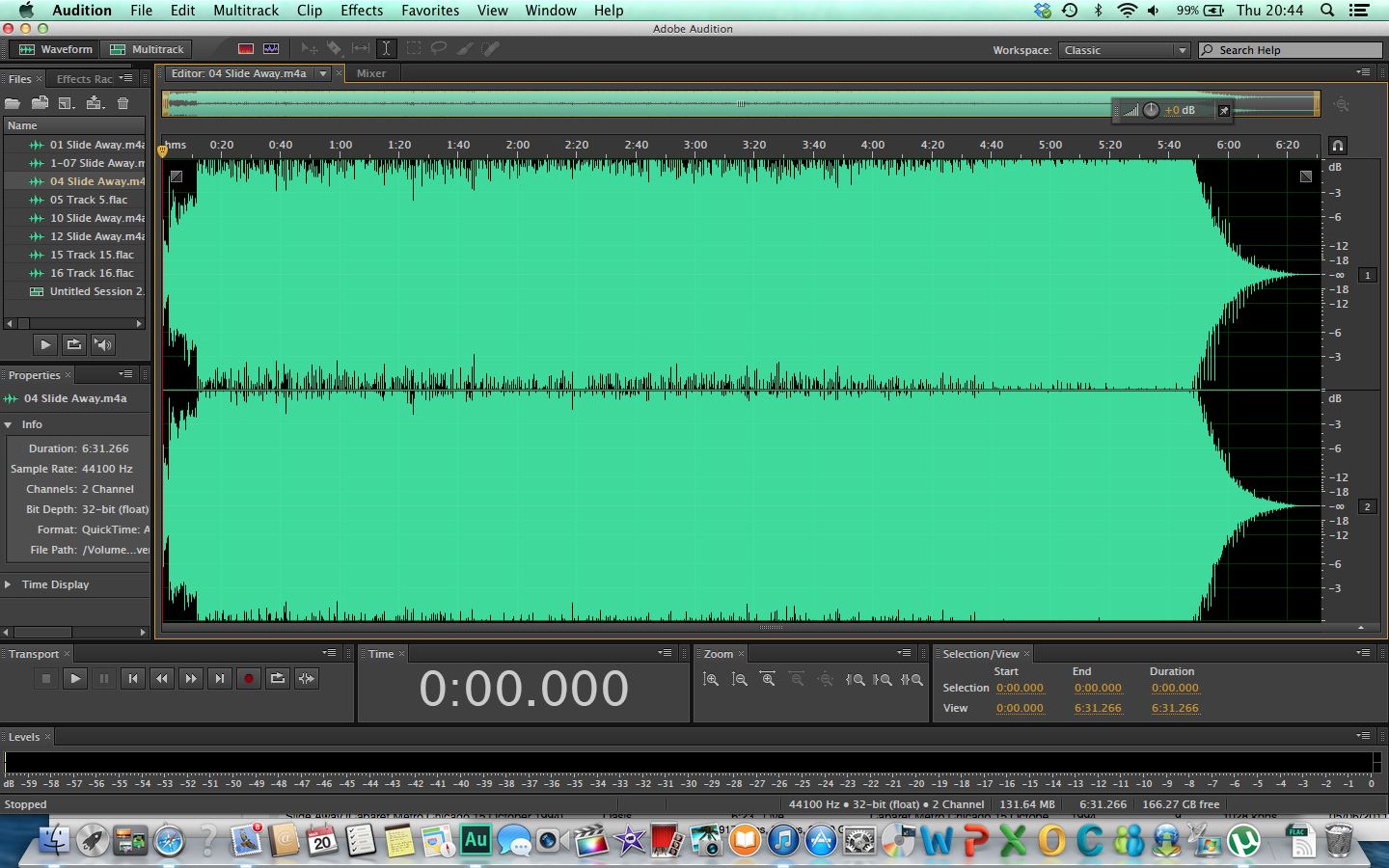
Waveform of Slide Away on Whatever CD single
Japanese CD of Definitely Maybe (2006 reissue):
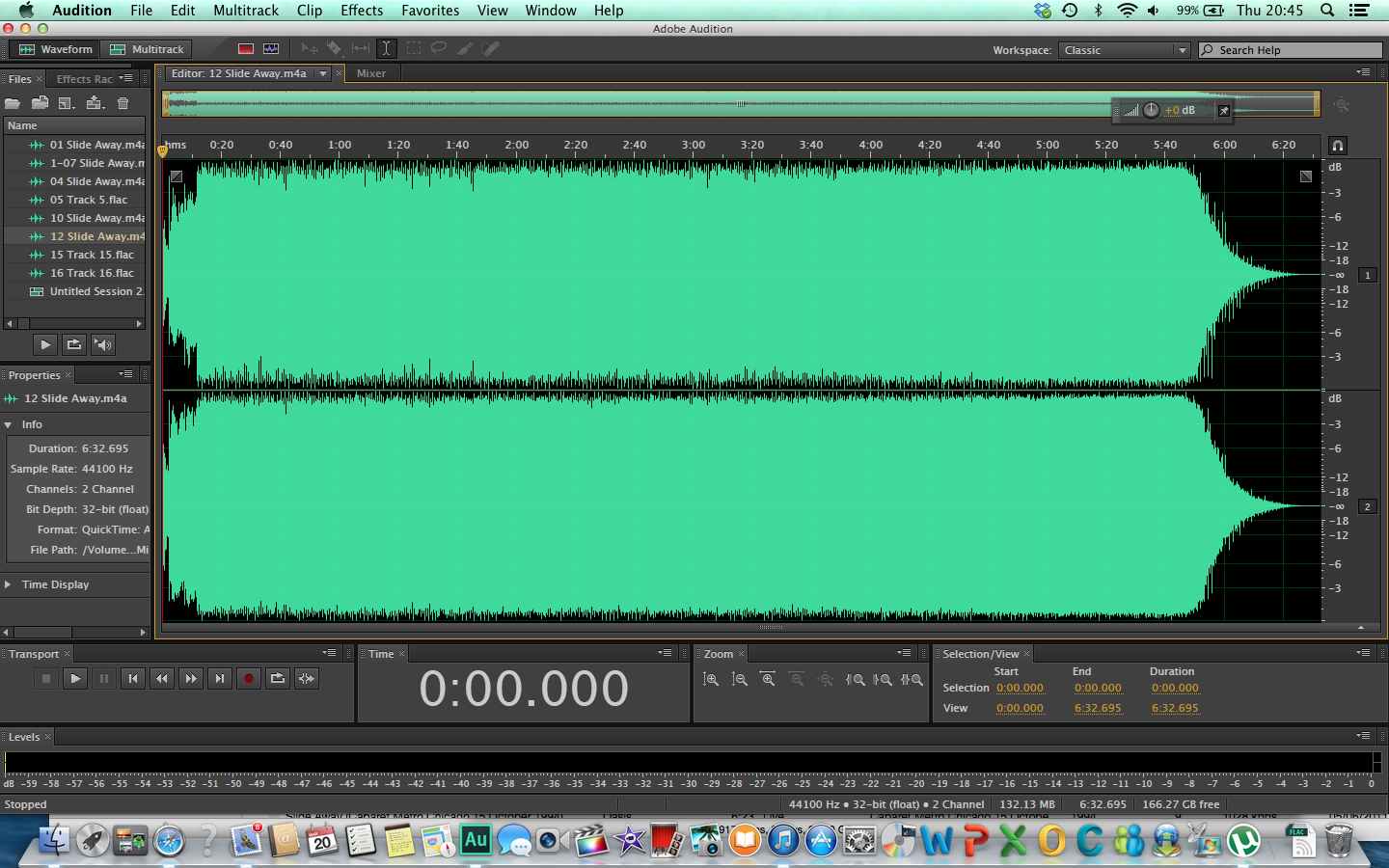
Waveform of Slide Away from 1994 Japanese CD
Stop the Clocks (2006 UK CD):
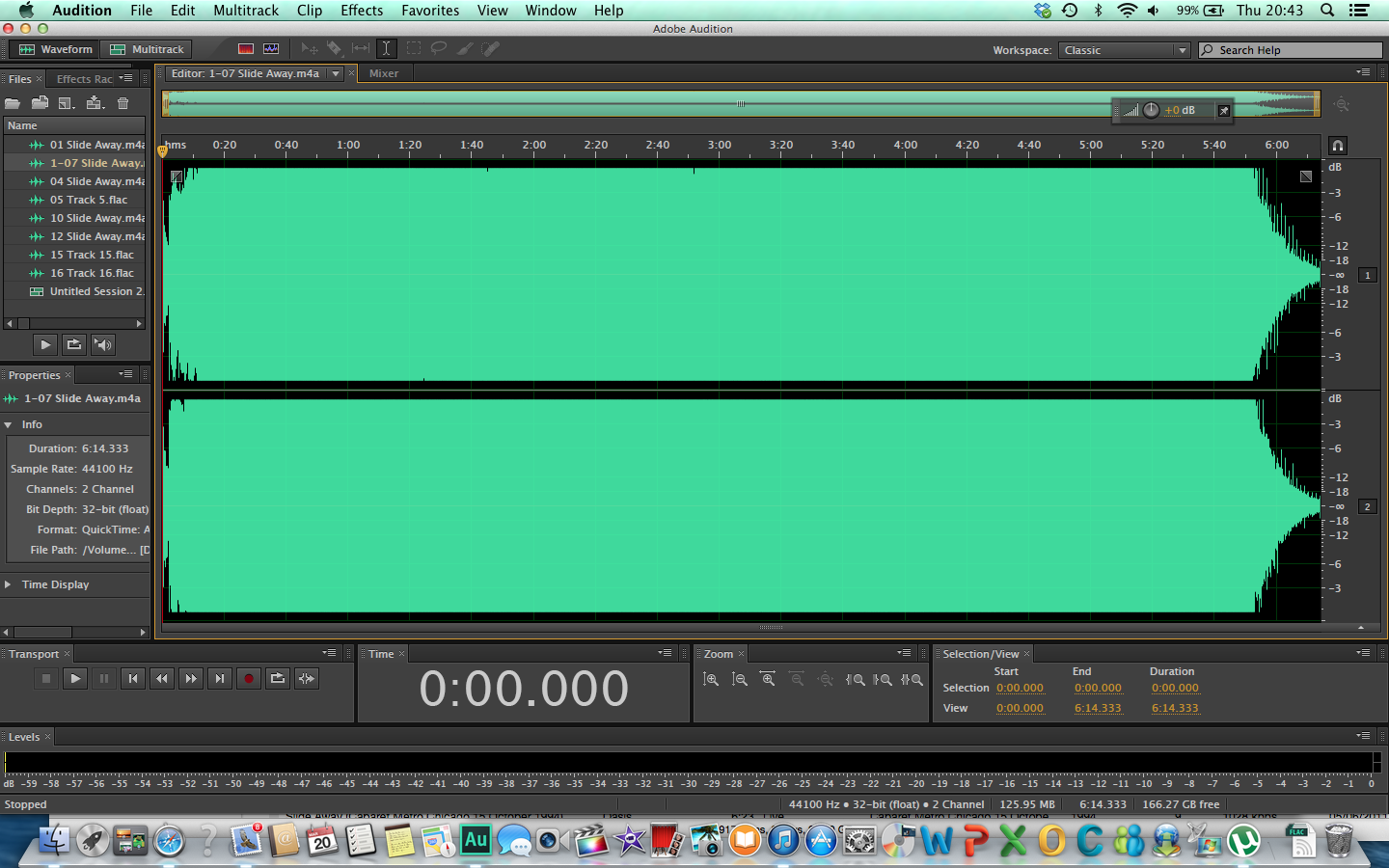
Waveform of Slide Away on Stop the Clocks (2006 UK CD)
The unmastered version from the safety copy of masters…
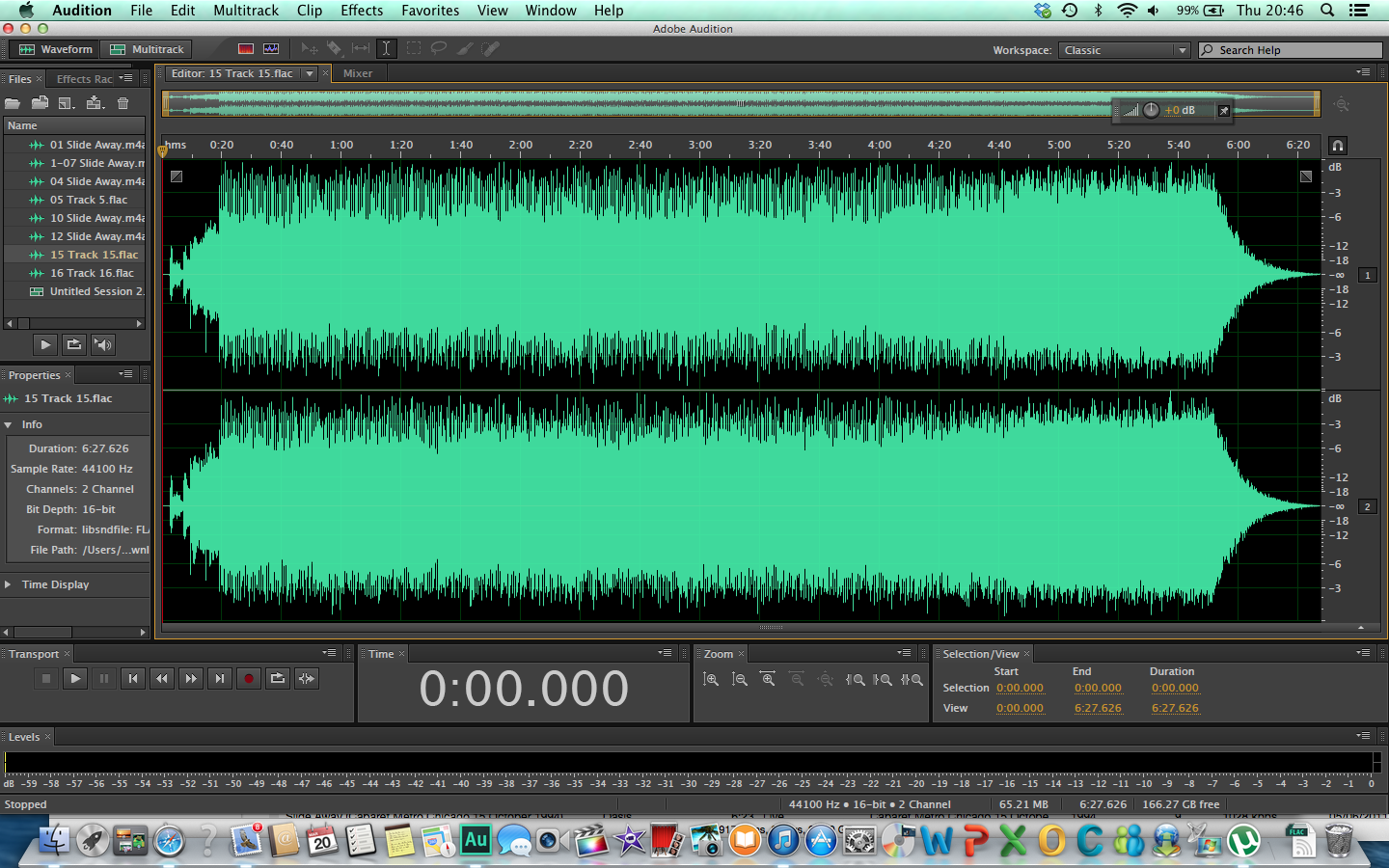
Waveform of unmastered version of Slide Away from safety copy of Definitely Maybe masters (DR10)
Here’s the unmastered version stacked up against the UK Creation CD:
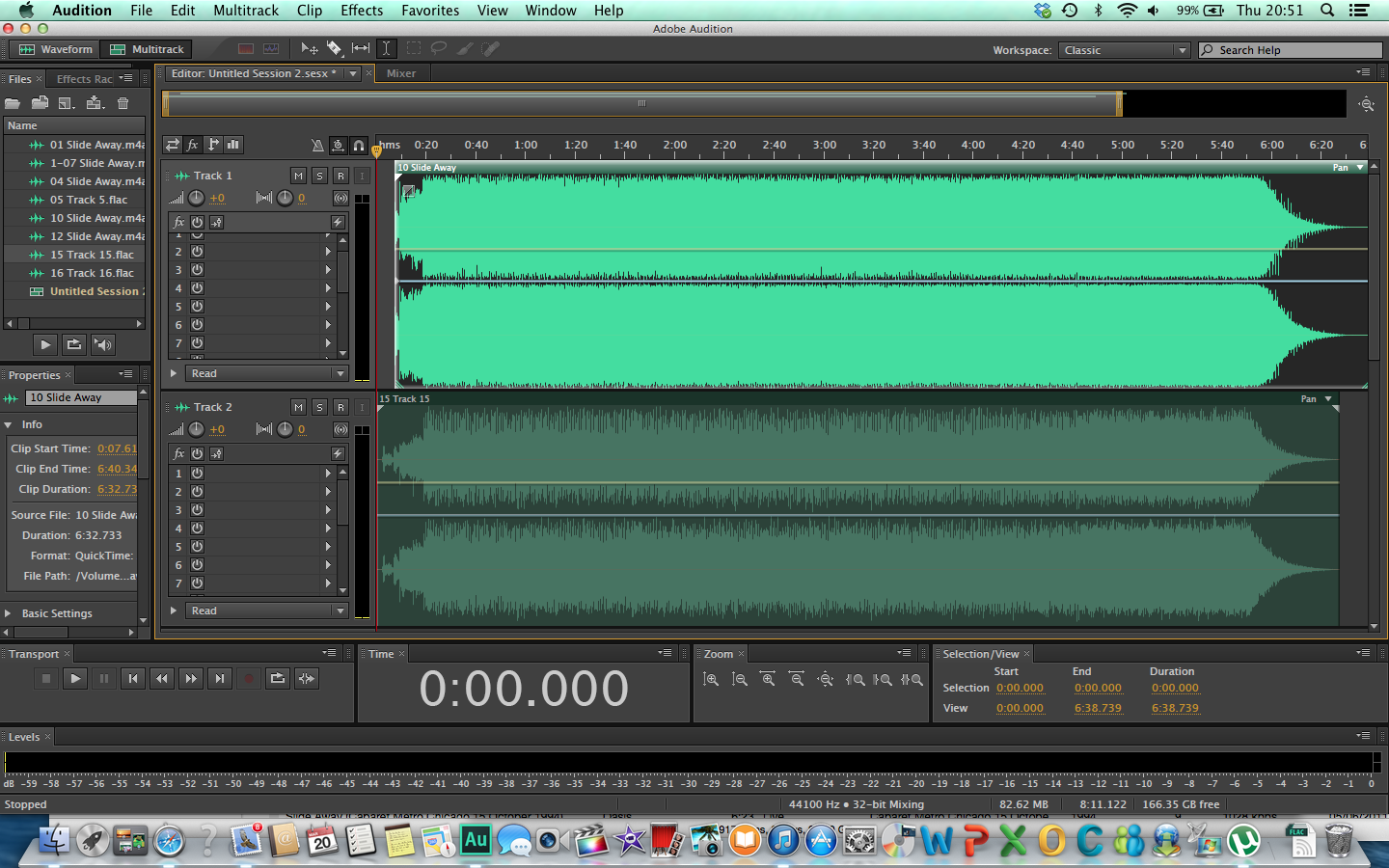
Waveform of Slide Away on UK CD (top) versus unmastered version (bottom)
As above, but zoomed in…
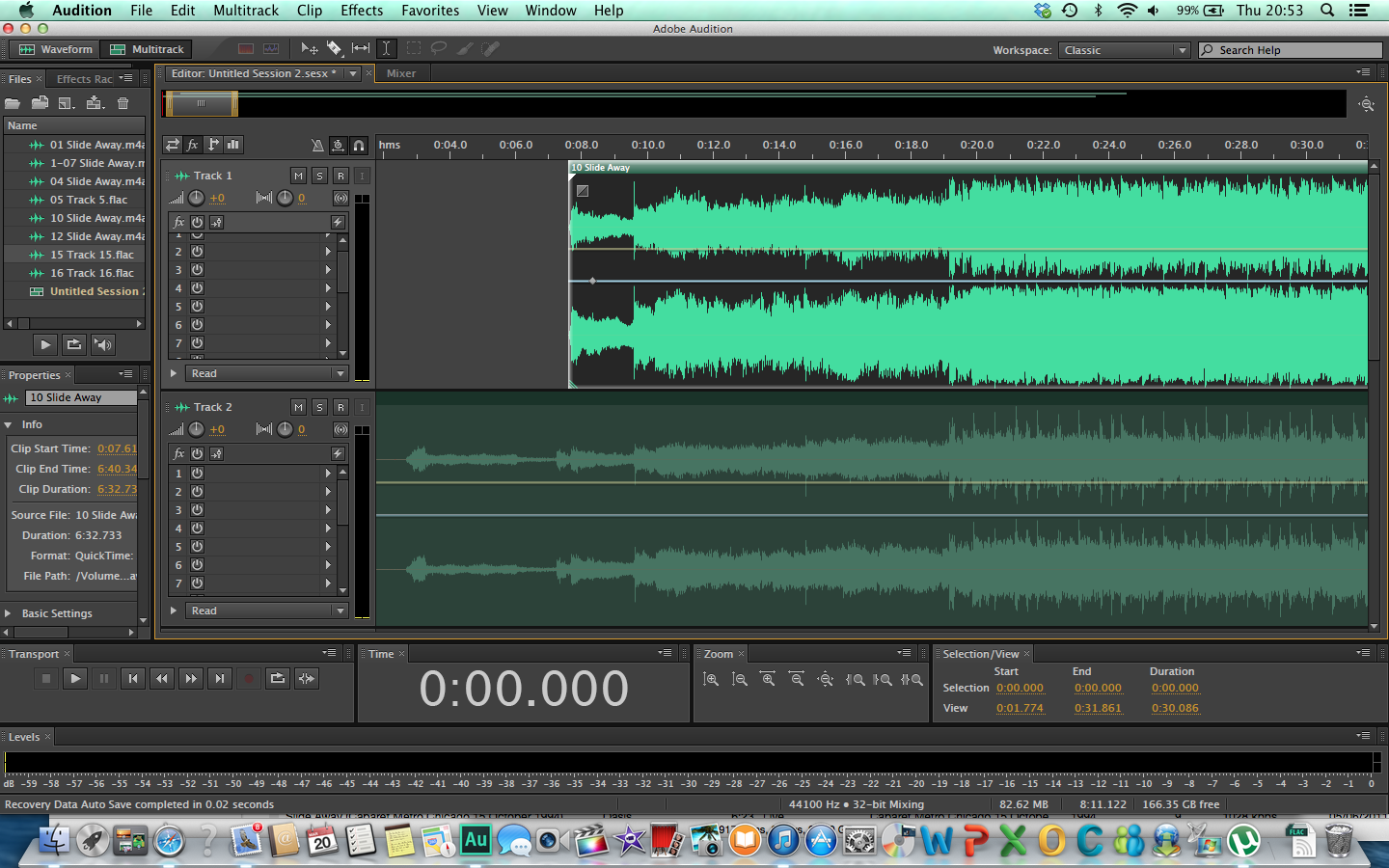
Magnified view of mastered (top) versus unmastered version of Slide Away (bottom)
Now, the two tracks have inverted phase. So I’ve flipped the phase on the released version. I’ve also lowered the level by -5 dB. This gets the intros looking pretty similar…
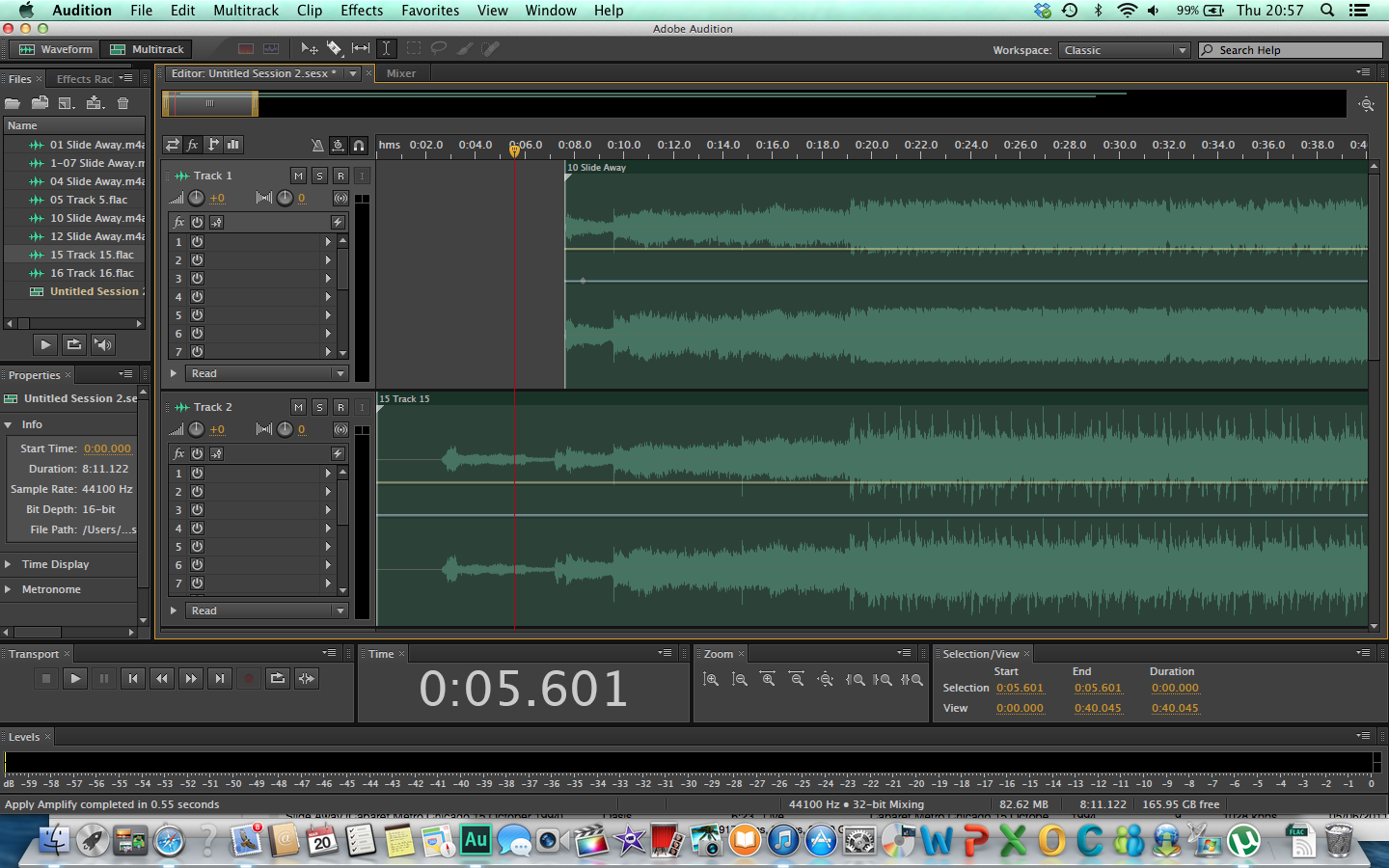
Intros matched in level
Zooming out, you can see that the unmastered version is much more dynamic…
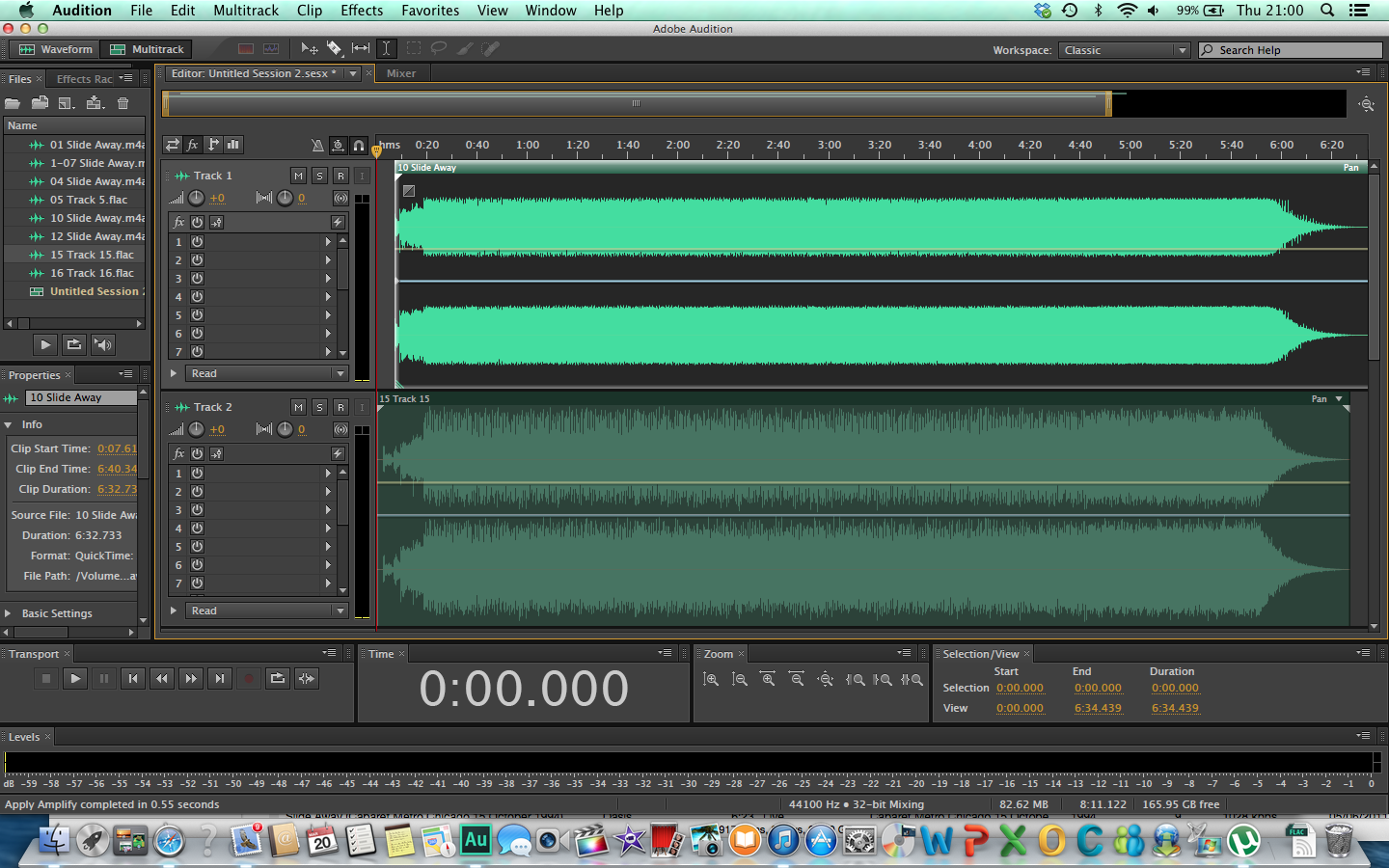
Zooming out shows the wider dynamics of the unmastered version (DR10) compared to the mastered version (DR5)
And now, with my ears – the unmastered track has a different EQ. More bass end and also less top. They do stay almost perfectly in sync though (so no varispeeding going on here). As you can see from above, the fades are slightly different (and the intro is unedited on the unmastered version).
Top of Page
(Analysis by Tom S; TT DR data added by David Huggins; source material from NoelsOasis. Copyright Oasis Recording Info, 2014).










